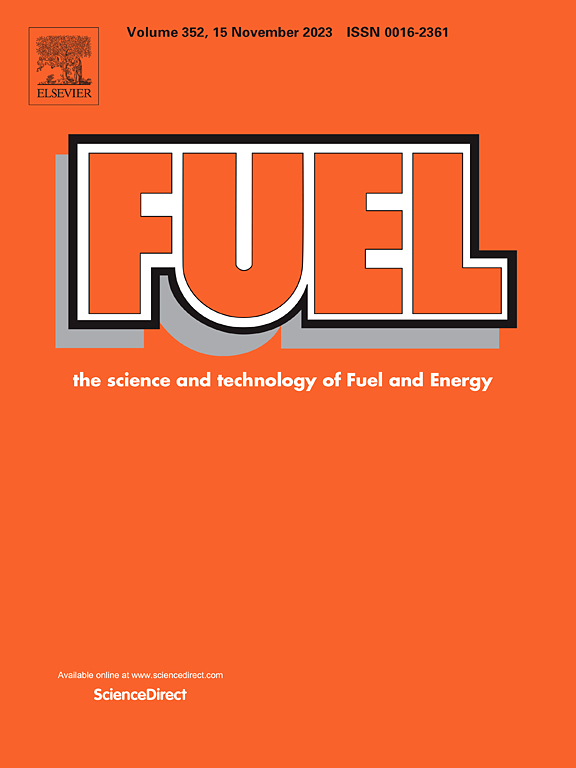Molecular insights into CO2-EOR/CCUS: Nanoconfinement effects on multi-component diffusion and miscibility in shale reservoirs
IF 6.7
1区 工程技术
Q2 ENERGY & FUELS
引用次数: 0
Abstract
CO2 injection is a promising method for increase oil recovery, while also enabling secure CO2 storage in shale reservoir, thereby reducing greenhouse gas emissions. Shale is distinguished by the abundance of small nanopores, where the molecular movement of fluids is influenced by the nanoconfinement effect, causing deviations from linear diffusion. Therefore, investigating the microscopic diffusion and interaction mechanisms of CO2-reservoir fluid systems in nanopore is of significant guiding importance for enhanced oil recovery and carbon storage of shale reservoirs by using CO2 injection. Shale nanopores with varying SiO2 and kerogen contents are developed through molecular simulation to reveal the multicomponent diffusion and molecular-level interaction mechanisms interactions of CO2 with light, medium, and heavy hydrocarbons in the presence of water, asphaltenes and methylbenzene across immiscible and miscible states. Compared to the immiscible condition, the diffusion coefficients of CO2, methane, pentane, octane, and tetradecane in the miscible condition decrease by 48.46%, 77.68%, 39.16%, 51.26%, and 58.89%, respectively, while the diffusion coefficients of methylbenzene and asphaltenes increase by 16.96% and 33.15%, respectively. The volume expansion of crude oil and the reduction in viscosity caused by Oil–Gas miscibility facilitate the multicomponent diffusion of heavy components. As organic content in nanopores increases, the interaction between the wall and light hydrocarbons weakens, while heavy hydrocarbons tend to adsorb onto the wall. The diffusion coefficients of crude oil in the nano pores are decreased by 20% due to the presence of water. The study concludes that miscible CO2-EOR significantly enhances shale oil recovery efficiency through the complex interactions of CO2 and reservoir fluids in nanopore.
求助全文
约1分钟内获得全文
求助全文
来源期刊

Fuel
工程技术-工程:化工
CiteScore
12.80
自引率
20.30%
发文量
3506
审稿时长
64 days
期刊介绍:
The exploration of energy sources remains a critical matter of study. For the past nine decades, fuel has consistently held the forefront in primary research efforts within the field of energy science. This area of investigation encompasses a wide range of subjects, with a particular emphasis on emerging concerns like environmental factors and pollution.
 求助内容:
求助内容: 应助结果提醒方式:
应助结果提醒方式:


